-
What You Need to Know About Federal Pacific Electric and Zinsco Panel Warnings
Although electrical wiring and appliances have become prime examples of the comforts of home in developed countries, your systems may not be entirely foolproof. Certain electrical panels near San Jose were once popular but fell out of favor when it was discovered that they presented an array of hazards. Federal Pacific Electric and Zinsco are two examples of circuit breaker panel companies that ended up threatening the safety of their customers. If you want to make sure your electrical systems are as safe as possible, you should have your professional electrician take a look at your panels and wiring. Continue reading to learn what you need to know about Federal Pacific Electric and Zinsco panel warnings.
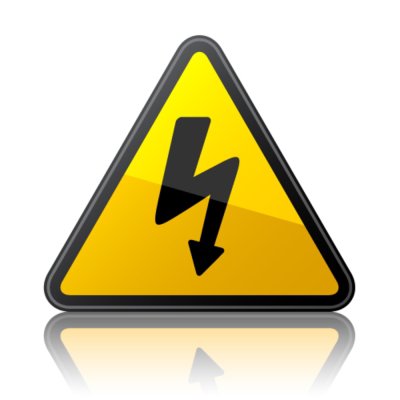
Federal Pacific Electric Panel
For a few decades leading up to the 1980s, Federal Pacific Electric held one of the top spots on the list of popular manufacturers of circuit breaker panels in the United States. While this popularity was great for the company, it turned out to be extremely hazardous for consumers. It was ultimately found that the company didn’t test their circuit breaker panels to see if they met the standards set by UL; they clearly would not have met these standards, as they often failed to serve their purpose and caught fire.
Zinsco Panel
Like Federal Pacific Electric, Zinsco was another company that dealt with circuit breaker panels; and like Federal Pacific Electric, their products were hazardous for the homeowners who purchased them. In addition to creating a fire hazard, Zinsco panels also put consumers at risk for electrical shock. Faulty panels could even require extra energy, driving up your energy bills and reducing the efficiency of your home.
How to Practice Electrical Safety
Your electrical system is directly related to the safety and practicality of your home, but it can be complex to diagnose and address the issues you encounter on your own. It’s a good idea to hire and form a relationship with a quality electrical counter sooner rather than later so you can have your systems inspected and make sure your risks and hazards are kept to a minimum.
-
Common Causes of Tripped Circuit Breakers
When your appliances shut off and your power goes out for no apparent reason, the culprit may be a tripped circuit breaker. If you don’t want to call your electrician serving San Jose every time this occurs, you will need to understand what is causing the issue. Watch this video for a look at some of the common causes of tripped circuit breakers.
The purpose of your electrical circuit breaker is to interrupt a circuit when too much power is introduced. Thus, your circuit breaker might trip if you plug too many appliances into the same outlet; when the circuit overloads, the breaker springs into action. Although this is a common cause of a tripped breaker, it’s not the only one. It can also occur if a wire inside your receptacle box becomes loose, you use a damaged extension cord, or you accidentally puncture an electrical wire when doing some home decorating or remodeling.
-
Could Your Electrician Be the Key to Home Upgrades?
Every homeowner needs a team of professionals to make sure everything stays in working order. Your team might be made up of contractors like plumbers, landscapers, and electricians serving San Jose. If you have decided that it’s time to make an upgrade to your home, it’s crucial that you consult your electrical contractor first; while you might be handy, you probably don’t have the training and experience that a qualified contractor brings to the table. Read on to find out how your electrician could be the key to home upgrades.

Hazards of DIY
Planning and laying out the details for your home upgrade is one thing, but pulling it off by yourself is a different story. There are countless different factors that you need to consider, from your plumbing to your electrical wiring. Even if you have everything planned out in your mind, you will need to consult professional contractors to make sure everything goes according to plan. Attempting to manipulate your electrical wiring can come with serious consequences; you might suffer an electrical shock, or you could even experience a deadly fire. There are certain circumstances in which a DIY approach can work, but this is not the case when it comes to your electrical systems.
Professional Training and Expertise
It’s crucial that you work with a professional electrician when you make a substantial home upgrade. Your specialist can explain to you how the modification will affect your electrical wiring, and he or she will be able to ensure that the upgrade is performed successfully. Only professional electricians can offer this peace of mind, as they have undergone extensive training and have the necessary expertise in the industry. Unless you yourself have gone through the same training, you should call an electrician when working on a home upgrade.
Finding the Right Contractor
Not just any electrician will make sure your home upgrade goes off without a hitch. Find an experienced professional who has been in the industry long enough to know what types of mistakes to avoid and what to expect out of your new home upgrade.
-
Why You Need a Professional for Wiring Conversion
Being a homeowner is a big responsibility. However, just because you’re responsible for your home doesn’t mean you have to perform every maintenance and home improvement job yourself. If fact, there are many instances in which it’s more responsible to let a professional do the job. For example, converting your home’s wiring is best performed by an electrician serving San Jose .
Wiring is dangerous work. Fortunately, professional electricians have thousands of hours of training, and know precisely how to complete wiring conversions without injury to themselves or damage to your property. Why put yourself at risk when you can leave the job to a team of seasoned professionals? Hiring trained, licensed, and insured experts to convert your aluminum wiring to copper is the only way to ensure that the job is done absolutely right. Also, your homeowner’s insurance company will likely insist that the job is done professionally—your home’s wiring is too important to be left to anyone who doesn’t have the requisite training and experience.
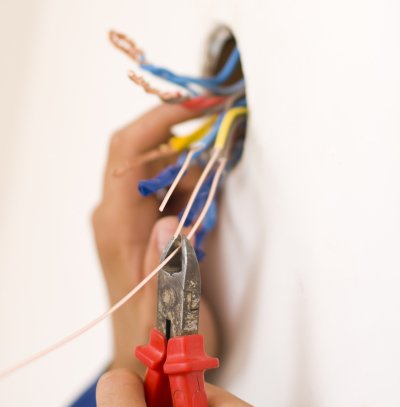
-
The Importance of Arc Fault Circuit Interrupters
As a homeowner, you want to make your home as safe as possible for yourself and your family. As you look around your home, you might assume that you’ve already achieved maximum safety. However, one of the greatest potential risks is out of sight: the electrical system behind your walls. Fortunately, maximizing the safety of your electrical system is as easy as calling an electrician in San Jose . If you haven’t already, you should have a professional install arc fault circuit interrupters (AFCI) throughout your electrical system.
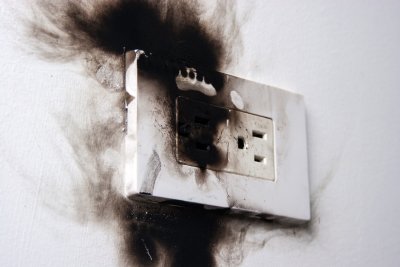
Arc Fault Basics
Under normal circumstances, electricity should travel safely throughout your home via electrical wires, or conductors. An arc fault occurs when electricity travels outside of safe conductors. A big enough arc could ignite insulation or another flammable part of your home, contributing to a disastrous electrical fire; in fact, arc faults are among the leading causes of electrical fires in this country. The older the wiring, the higher the risk of arc faults.
How AFCI Breakers Work
An arc fault circuit interrupter is designed to detect a dangerous electrical arc and promptly interrupt the circuit before a fire can ignite. When an arc fault occurs, it creates a sharp spike and drop that is easily detectible by an AFCI breaker. However, an AFCI breaker is sophisticated enough to tell the difference between a safe, normal arc and a potentially harmful arc fault.
Why They’re Important
Traditional circuit breakers are also important for electrical safety, but they alone cannot protect from electrical fires. A circuit breaker will only interrupt a circuit in the event of a short circuit or overload, and cannot detect an arc fault. AFCI breakers are so important that the U.S. electrical code now requires them in most newly constructed dwelling units. If your home has old wiring and does not yet have AFCI breakers, consider speaking with an electrician in San Jose. AFCI breakers are generally inexpensive and easy to install.
-
What Is Whole House Surge Protection?
A power surge is bad news for any homeowner. All it takes is one big electrical fluctuation to completely fry your computer or any of your vital home appliances. The best thing you can do is protect your belongings with surge protection. In fact, you might consider investing in whole house surge protection.
This video from Angie’s List recommends purchasing power strips for your computer and other valuable electrical devices. When looking at power strips, however, be sure to focus on the ones that offer warranties for damaged items. For ultimate protection, consider asking your electrician in San Jose about whole house surge protection. This type of protection is installed in the areas where electricity comes into your home, and prevents sudden fluctuations in power from causing serious damage.
-
Problems with Aluminum Wiring
When it comes to home wiring, copper is the gold standard—or more appropriately, the “copper standard.” However, the price of copper has fluctuated over the years, whereas aluminum has remained rather low. For this reason, there are many buildings that have aluminum instead of copper for their wiring. Aluminum was thought to be an acceptable alternative in the 1960s and 70s, but has since been discovered to be subpar. If you have aluminum wiring in your home, consider having an electrician in San Jose to replace it for you.
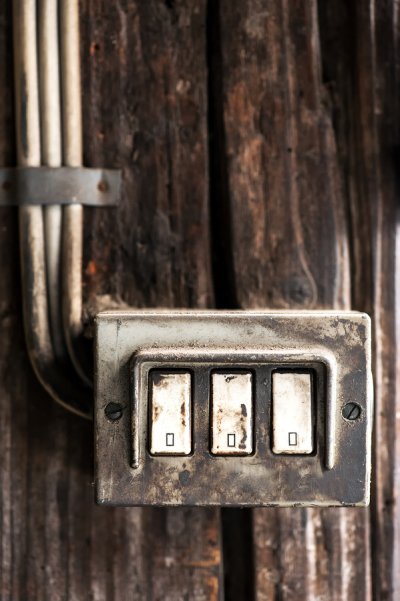
Less Effective Conductor
Though aluminum is less expensive than copper, its composition makes it a less effective conductor. For this reason, you need to use more aluminum in order to achieve the same amperage. Aluminum is also less ductile than copper, which means it is more likely to break down when drawn into thin wires and bent. Aluminum is more malleable than copper, and thus more sensitive to compression. The areas that get compressed have more electrical resistance, which is not what you want from a wire that’s supposed to conduct electricity.
Faster Deterioration
Copper is more resistant to corrosion than aluminum. If aluminum is exposed to moisture and certain kinds of metals, it will undergo something called “galvanic corrosion,” which is bad news for an electrical wire. Also, aluminum wire is more easily oxidized than its copper counterpart, and oxidization can seriously compromise important connections, which can in turn cause a fire hazard.
Potential for Loose Connections
Tight, secure connections are important for electrical functionality and safety. Unfortunately, aluminum wire behaves in such a way that sometimes makes it difficult to hold a connection. As mentioned above, oxidation is part of the problem. Another problem is that aluminum expands and contracts with temperature changes, and vibrates more than copper when an electrical current passes through it. Over time, these changes in size can cause aluminum to be separated from its connections, rendering it ineffective and unsafe.
-
What Is Knob-and-Tube Wiring?
As a homeowner, you likely take great pride in tackling home improvement projects yourself. However, there are some things that are worth calling a professional for: electrical wiring , for example. If your home was built before World War II, there’s a chance that it was wired with the knob-and-tube method. This wiring method is now obsolete, and should be replaced wherever it exists.
As the name suggests, knob-and-tube wiring is comprised of ceramic knobs and tubes. Unfortunately for the owners of older homes, knob-and-tube wiring is difficult to improve or retrofit, and is considered a fire hazard—especially when the wires are surrounded by building insulation. This is because the fiber materials in knob-and-tube wiring can become brittle over time. If your home has this type of wiring, it’s possible that your insurance company will not approve fire insurance. For the sake of your own safety, it’s important to have an electrician identify and remove knob-and-tube wiring and replace it with a safer method of wiring as soon as possible.

-
What to Know About Arc Fault Breakers
Since most of a typical home’s electrical system is out of sight, most homeowners do not understand how complex or sophisticated it truly is. For example, one big aspect of the modern home electrical system is the arc fault breaker, also known as an arc fault circuit interrupter. This piece of technology is vital for protecting your home from electrical fires.
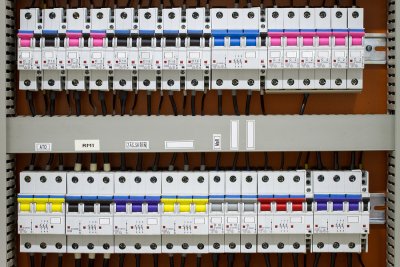
Importance
To understand the importance of arc fault breakers, it’s important to understand the concept of arc faults. Simply put, an arc fault is when an arc, or electrical discharge, flows through an unplanned path. As you can imagine, this could lead to some pretty dangerous circumstances—including an electrical fire. An arc fault breaker is designed to detect arc faults and protect the circuit, thereby reducing the risk of an electrical fire, of which there are more than 40,000 a year in the U.S.
Basic Function
The average arc fault breaker is very sophisticated, and uses advanced technology to detect various types of arcing. Normal arcing occurs all the time when electrical appliances are turned on—these require no special action from the arc fault breaker. When an arc fault occurs, however, the arc fault breaker instantly recognizes the fault and interrupts the circuit, thereby reducing the danger. By contrast, conventional circuit breakers are only equipped to respond to overloads and short circuits. Arc fault breakers are now required by law for circuits feeding into electrical outlets in most rooms.
Nuisance Tripping
Though arc fault breakers are vital for safety, there are times when they overreact. In other words, an arc fault breaker may interrupt a circuit even when an appliance is being used safely and properly. This is called “nuisance tripping.” This occurs most commonly with older electrical tools and appliances that have motors with brushes. Vacuums and power drills are two such appliances. If your breaker frequently engages in nuisance tripping, have an electrician take a look and address the problem. You should know that arc fault breakers are being improved on all the time.
-
How to Reset a GFCI Outlet
Most homeowners know very little about their electrical system. While you don’t need to be a professional electrician to be a responsible homeowner, it helps to know a few basic things. For example, it’s good to know that a GFCI outlet, or ground-fault circuit interrupter outlet, can be reset when it trips. This video provides a good introduction to GFCI outlets as well as a simple demonstration of how to reset a tripped outlet.
GFCI outlets are designed to automatically trip under potentially dangerous circumstances—for instance, when a blow dryer is dropped into a tub. When this occurs, the reset button (the top button) is in while the test button is out. To reset the outlet, simply press the reset button and power should be restored to the outlet. If it isn’t, you should call a San Jose electrician.
RECENT POSTS
categories
- Uncategorized
- Delta Electric
- Commercial Electrical
- Residential Electrical
- Electric Circuits
- Dedicated Circuits
- Circuit Breakers
- Electrical Panels
- Electrical Wiring
- Safety Inspections
- copper wires
- Electrician San Jose
- Trained Electricians
- Electrical Services San Jose
- Malfunctioning Electrical Outlets
- Circuit Breaker
- Grounding
- safety
- Flickering Lights
- Arc Fault Breakers
- electrical system
- Aluminum Wiring
- Circuit Interrupters
- House Surge Protection
- Zinsco Panel Warnings
- Wiring Conversion
- GFCI outlet
- professional electrician
- Knob-and-Tube Wiring
- modern home electrical system
- Fuses
- Electric Car Charger
- Electrical Repair
Archives
2025
2024
2023
2018
2017
- December (4)
- November (4)
- October (5)
- September (4)
- August (4)
- July (4)
- June (4)
- May (4)
- April (4)
- March (3)
- February (4)
- January (3)
2016
- December (3)
- November (4)
- October (4)
- September (4)
- August (4)
- July (4)
- June (4)
- May (4)
- April (4)
- March (4)
- February (4)
- January (4)
2015
- December (4)
- November (4)
- October (4)
- September (4)
- August (3)
- July (4)
- June (4)
- May (3)
- April (4)
- March (4)
- February (2)
2014
- December (3)
- November (4)
- October (4)
- September (6)
- August (2)
- July (3)
- May (2)
- April (1)
- March (2)
- February (1)
- January (1)

